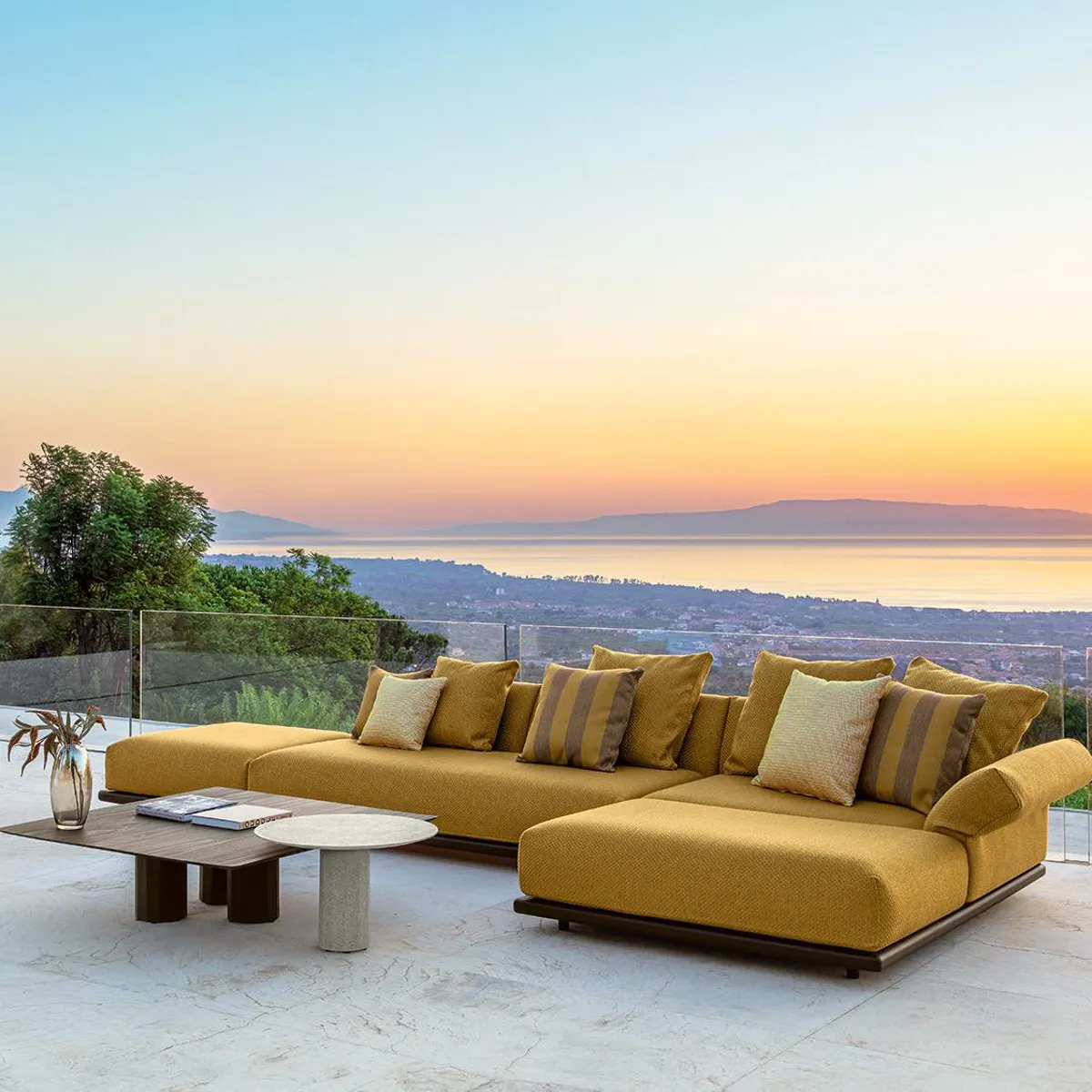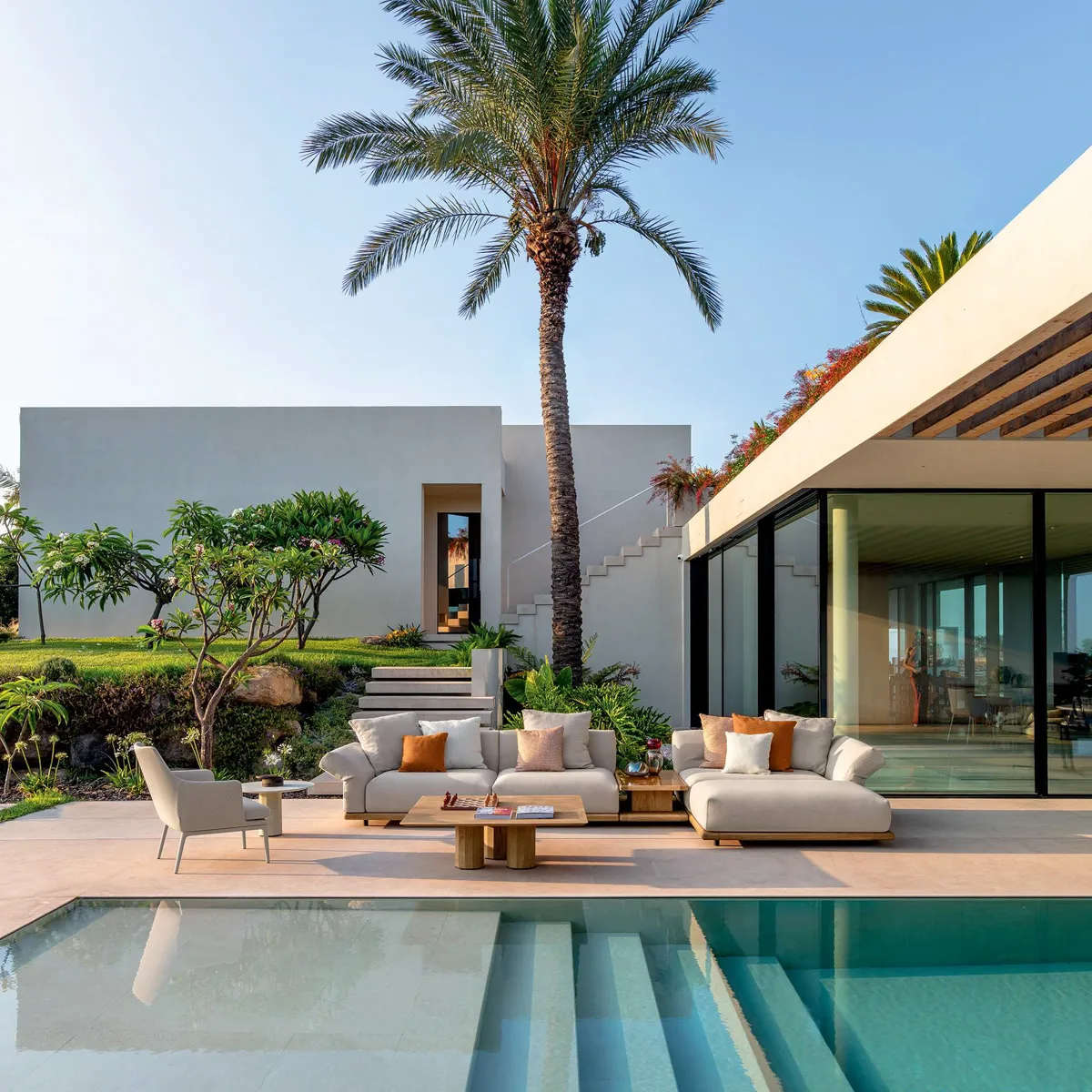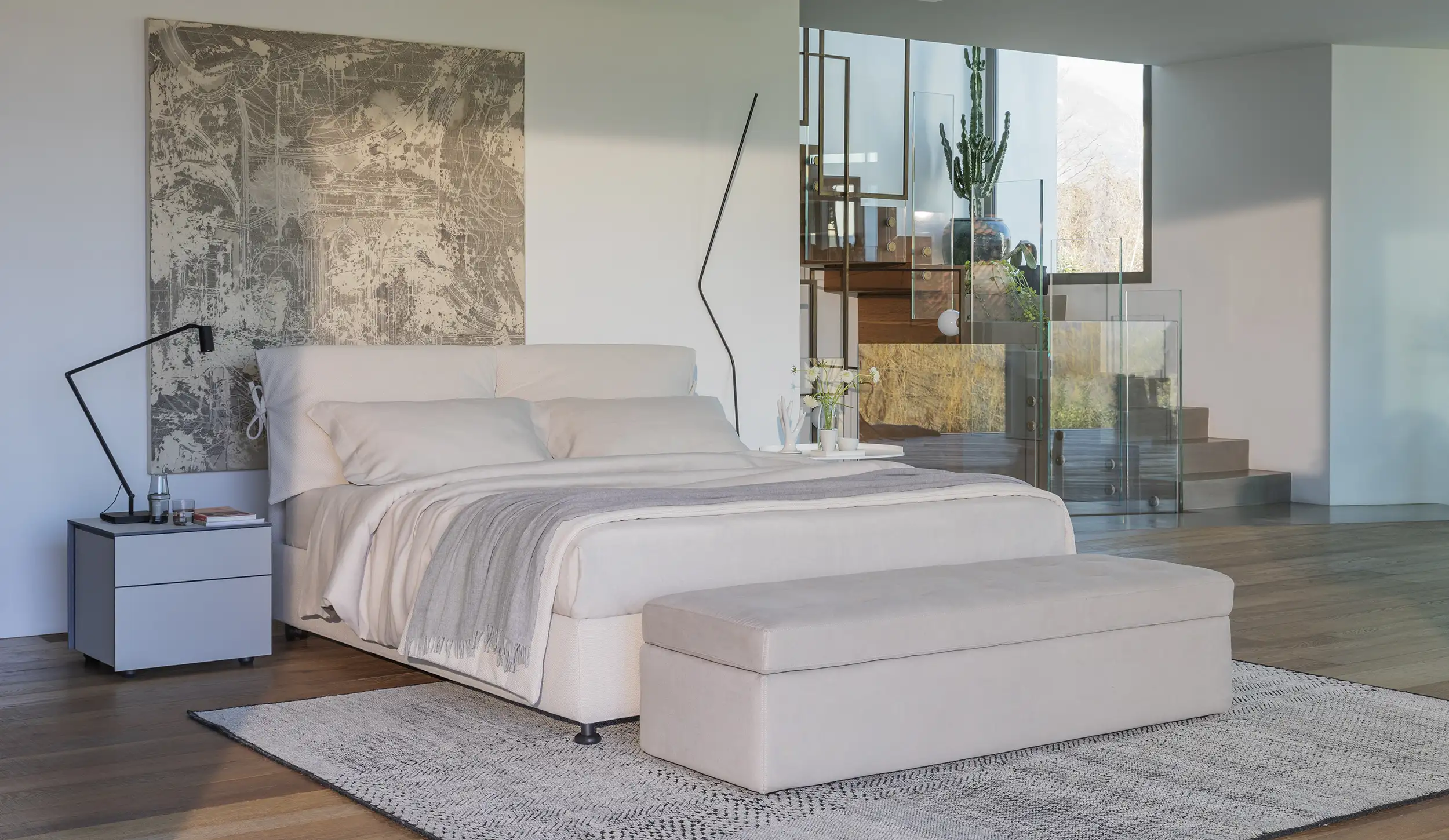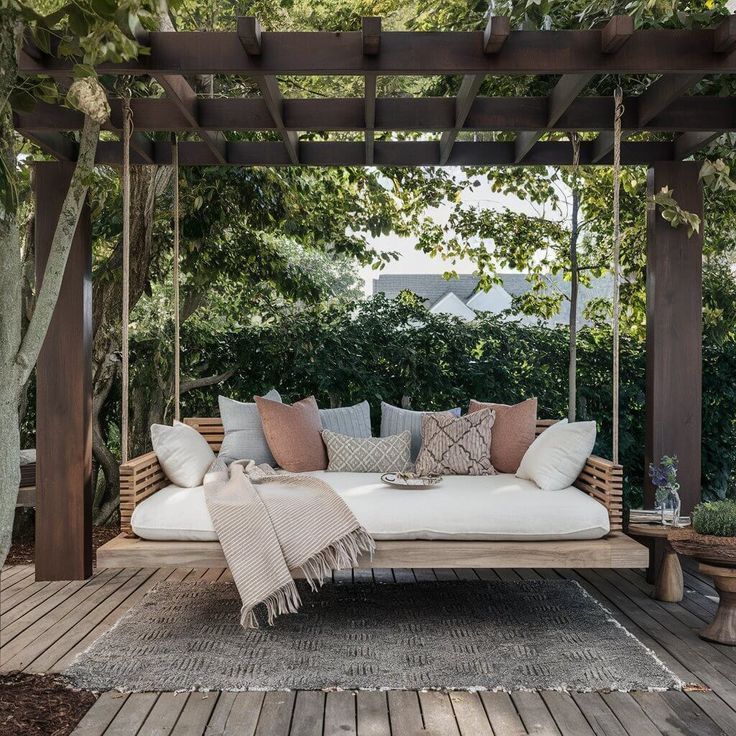The word “luxury” has been overworked to the point of parody. Put a beige veneer on particleboard, ship it six months late, and someone will call it luxury. Buyers who’ve lived with the furniture—through pets, moves, and dinner parties—tell a very different story. Below is a clear-eyed guide to what consistently performs, what occasionally does, and what only looks the part.
The Shortlist: Brands that keep showing up—in a good way
Room & Board
If there’s a recurring winner on durability, service, and value, it’s Room & Board. The pattern is consistent: pieces that still look sharp after a decade or two, delivery teams that act like pros, and customer service that fixes problems without theater. The company leans on American manufacturers and small artisan partners, and that shows up in the details—clean welds on metal bases, true solid hardwoods, and sofas that don’t wilt after one brutal winter of movie nights. It isn’t museum-piece expensive, but it behaves like furniture you plan to keep. A small caveat: not every line is U.S.-made, and even good brands can ship a dud. Expect mostly hits.
Talenti
Outdoor living rarely reaches the level of architecture, but Talenti manages precisely that. Italian-designed and engineered, Talenti’s collections are not casual patio sets—they are sculptural, weather-resistant environments meant to anchor terraces, courtyards, and rooftops. Teak, stone, aluminum, and technical fabrics are combined with the sort of detailing usually reserved for yacht design. In climates where most outdoor furniture looks tired after a single season, Talenti holds its line for years, making it one of the few true luxury outdoor specialists.
Flou
Flou occupies the quiet pinnacle of the bedroom. Known for its upholstered beds and exquisitely tailored mattresses, the brand elevates rest into design. Italian fabric artistry meets ergonomic precision, resulting in beds that are simultaneously sculptural objects and deeply functional. It is the sort of furniture that disappears into a room not by being invisible but by making everything around it feel more intentional. For anyone who believes luxury begins and ends with the quality of sleep, Flou is indispensable.
Stickley, Hickory Chair, Bernhardt (the heritage trio)
If your definition of luxury is “heirloom with manners,” the old guard still delivers. Stickley’s reputation for hardwood frames and traditional craftsmanship holds up, and plenty of buyers are living with 15-, 25-, even 100-year-old pieces that still function beautifully. Hickory Chair and Bernhardt occupy that same American-heritage lane: timeless silhouettes, strong joinery, and the kind of weight that tells you the frame isn’t stapled pine. These are the brands you can reupholster instead of replace.
Meridiani
Meridiani’s strength is understatement. Sofas, tables, and case goods present themselves in serene, neutral palettes, but closer inspection reveals obsessive attention to proportion and detail. The pieces are neither overly stark nor decorative—they exist in that rare middle ground where a space feels complete without feeling staged. Meridiani’s collections are the backbone of many contemporary European interiors: refined, calm, and endlessly adaptable.
Leather specialists: Hancock & Moore, American Leather, Bradington-Young, Stressless, Poltrona Frau
For leather seating, go to people who obsess over hides. The feedback cluster is remarkably aligned: premium leather furniture from these makers ages gracefully rather than “peels at year two.” Expect full-grain or top-tier corrected leathers, solid frames, and cushions that relax instead of pancake. At the very top, Poltrona Frau brings the kind of leather finishing that makes patina a design feature.
Italian design houses: Minotti, B&B Italia, Roche Bobois, Flexform, Ligne Roset, Fendi Casa
These are the names that pop up in galleries and serious design homes. The why is straightforward: engineering plus tailoring. Minotti and Flexform produce low-profile seating with rigorous construction under the upholstery; B&B Italia is the intersection of industrial innovation and craft; Ligne Roset offsets the minimalism crowd with sculptural softness (the Togo remains a comfort icon). You pay for design, materials, and finish—not a logo stamped on mediocrity.
Direct-to-consumer/custom standouts: BenchMade Modern, Maiden Home, Rowe, What A Room
Not every luxury-grade purchase requires a showroom pilgrimage. Several DTC or semi-custom makers have earned loyalty with sensible lead times, honest materials, and frames that don’t croak under normal use. Buyers consistently cite heavy, kiln-dried hardwood frames, cushion cores in the 2.0–2.5 lb density range (or better), and upholstery that stands up to daily life. If you like control—fabric, depth, configuration—these shops are a sweet spot.
Where to buy the real thing:
For clients who want verified, design-house caliber pieces without the guesswork, Melaaura in West Hollywood curates the heavy hitters—Talenti for outdoor architecture-grade living, Flou for refined Italian bedrooms, Meridiani for elegant, tailored interiors, and Bonaldo for sculptural dining and expressive forms. The showroom also features Atmosphera for weather-proof outdoor collections that trade trend for longevity. As Talenti’s Los Angeles partner with a dedicated Robertson Blvd space, Melaaura pairs these brands with concierge-level support for homeowners, designers, and hospitality projects. Expect authentic materials, proper construction, and collections that age beautifully rather than age out.
Brands where selection matters (a lot)
Restoration Hardware (RH)
This is where the room gets polarized. Some households swear by “heavy, timeless, lasts forever.” Others mutter about white-label sourcing and price theatrics. The truth: RH carries both workhorse pieces and show ponies. Buy the former. Look for the same fundamentals you’d demand anywhere—frame specs, cushion composition, real wood where it counts—and test the actual model you’re ordering. If you chase the most dramatic silhouette in the catalog without interrogating construction, you’re betting on looks to do a job that physics must do.
Ethan Allen
Traditional styling, often solidly built, with long-run success stories. But there are isolated accounts of cushion fatigue shockingly early. Translation: verify cushion construction and spring system (8-way hand-tied or a well-executed sinuous system), and specify fill if options exist. The brand can be excellent; your exact configuration determines whether it will be.
Arhaus
Beautiful styling; inconsistent satisfaction. Customers praise the aesthetic and certain categories (lighting and smaller accessories) yet complain about lead times that drag and pieces that value appearance over structural integrity. If you love the look, proceed, but interrogate the frame and slat design on beds, the joinery on case goods, and the delivery window in writing.
Brands miscast as “luxury”
Pottery Barn, West Elm, Crate & Barrel (modern big-box)
These are style engines that can absolutely dress a room, but they’re not uniformly luxury. The critique is stark: veneers and engineered panels in places where you’d want solid wood, sofas with cushions that compress early, and, lately, delivery realities that can test your patience. That said, there are bright spots: 100% wool rugs from these retailers can be excellent value and survive kids, dogs, and dinner parties in ways synthetics won’t. Contract-grade pieces and Greenguard-certified selections in these stores are worth targeting. Shop the item, not the brand halo.
IKEA, Article, Castlery, etc.
Not luxury by any sane definition, but certain lines punch above their price. IKEA’s Stockholm collection and sofas with removable, washable covers earn surprisingly high marks for real-life durability. If you’re outfitting a family space, a washable slipcover beats performative “luxe” that stains at eye contact.
What actually signals luxury (hint: not the showroom)
If you want furniture that earns its keep, ignore adjectives and look for these non-negotiables:
- Frames: Kiln-dried hardwood (maple, oak, ash, beech). Avoid softwoods and hollow marketing terms. Pick it up—quality weighs more.
- Joinery: Dovetails on drawers, mortise-and-tenon or robust corner blocks on frames. Staples alone are a red flag.
- Support systems: Eight-way hand-tied springs are still the gold standard for certain builds; well-executed sinuous can be excellent. Cheap webbing is where sofas go to die.
- Cushions: High-resilience foam in the 2.0–2.5 lb range or better, wrapped in down/feather for comfort if you like that feel. All-down seats sound romantic; they demand constant fluffing.
- Leather: Full-grain or top-tier corrected. Bonded and split leathers are false economy.
- Wood species: Domestic hardwoods age well; “mango” and other fast-grow exotics are fashionable but can move, crack, or bruise.
- Stone and tops: “Real” stone is not automatically better—porous marbles etch. If you want zero-maintenance luxe, consider honed finishes or dense stones and sealers.
- Center support: Long sofas and beds need center legs or rails. The absence is not “minimal,” it’s physics denial.
Rugs and textiles: where luxury still means longevity
Natural fibers win. Hand-knotted wool rugs—Persian, Turkish, Karastan’s classic wool lines—shrug off years of traffic if kept dry and moth-free. Synthetics can look nice for a season and degrade fast. If you live in moth country, treat proactively and rotate.
For bedding and down, brands like Sferra and Boll & Branch appear repeatedly in “worth it” conversations. The test is year-round comfort and shell quality that doesn’t leak feathers or flatten into a quilt of sadness.
Lighting: the connoisseur’s arbitrage
Here’s a luxury move few make: buy high-end vintage or antique lighting and have it restored. The market for serious fixtures—think Maison Baguès, Murano glass, older Schonbek—has been soft, creating absurd under-the-radar deals at estate sales and local marketplaces. If you know what to look for (or hire someone who does), you can buy a $25,000 chandelier for a fraction, budget for professional restoration, and still come out ahead with a fixture that eclipses most retail offerings. Use platforms like 1stDibs and Chairish for research and comps, then hunt locally. Luxury is often about discernment, not the boutique bag.
The secondhand advantage: better wood, better bones
A lot of “grandparent furniture” is, bluntly, better made than new mid-market goods. Names like Baker, Thomasville, Henredon, Drexel, and Heritage frequently surface in glowing terms when bought used. If you like the lines but not the finish, refinish. If the upholstery screams 1997, recover. You can assemble an heirloom-tier home at outlet prices and sleep well knowing you rescued quality from the landfill.
When “custom” actually matters
Custom isn’t code for ostentatious. Done right, it means a frame built for your dimensions, fabrics that suit your life (kids, dogs, red wine), and hardware you won’t replace in six months. Small shops—regional makers, Amish workshops, or studios like Mezworks—earn raves because the people building the piece sign their work with pride. Yes, you’ll wait. You’ll forget the wait when the piece still looks right ten years in.
Delivery, service, and the patience tax
Lead times are the unglamorous part of “nice things.” Some retailers deliver on the date; others treat the calendar as a suggestion. If timing matters, get a realistic window and ask—politely, insistently—about logistics partners and white-glove service. It’s remarkable how much goodwill a competent delivery crew creates (or destroys). Brands with consistently strong service cultures—again, Room & Board stands out—save you from calendar purgatory.
A pragmatic shopping framework
- Set your hierarchy. Decide where you demand longevity (sofas, beds, dining tables) and where you can be flexible (side tables, lamps).
- Audit construction before aesthetics. The pretty is easy; the bones are everything.
- Interrogate cushions. Ask the density, the wrap, and whether cores are replaceable. Sit in it—then sit in it again.
- Choose fibers and finishes for life. Wool rugs, performance fabrics, leathers that will patina, finishes you can maintain.
- Mind the resale ecosystem. A brand with a healthy secondhand market usually builds things worth keeping.
- Be trend-resistant. Bouclé is charming until your room becomes a snowdrift. Buy forms you won’t loathe next autumn.
- Consider contract grade and certifications. “Contract-grade” often means sturdier frames and hardware. Greenguard can reduce indoor air quality worries.
- Weight and silence tests. Pull a drawer (should glide, not rasp). Lift a chair (should feel planted). Wiggle a leg (shouldn’t).
- Inspect support. Sofas need center legs over long spans; beds need proper rails and slats.
- Get it in writing. Lead time, warranty, service commitments. Hope for the best; plan for reality.
Brand cheat-sheet (zero fluff)
- Consistent keepers: Room & Board; Stickley/Hickory Chair/Bernhardt; Hancock & Moore/American Leather/Bradington-Young/Stressless; Poltrona Frau; Minotti/Flexform/B&B Italia/Ligne Roset; BenchMade Modern/Maiden Home/Rowe; Copeland (Vermont hardwoods).
- “Choose carefully” tier: Restoration Hardware, Ethan Allen, Arhaus—buy by spec, not by photo.
- Smart budget plays: 100% wool rugs from mainstream retailers; IKEA Stockholm and washable-cover sofas; quality secondhand from Baker, Henredon, Drexel, Thomasville.
- Lighting power move: Vintage/antique high-end fixtures + professional restoration.
- Materials that matter: Kiln-dried hardwood, proper joinery, 8-way or quality sinuous springs, HR foams 2.0–2.5 lb+, full-grain leather, hand-knotted wool.
Bottom line: Luxury in the home is not a price bracket—it’s the convergence of engineering, materials, and restraint. The winners here aren’t the loudest brands; they’re the builders whose pieces keep their shape, survive real life, and age into your house rather than out of it. Shop like a skeptic, lift before you love, and let construction dictate your splurges. Your future self—feet up, glass of red in hand, cushion still buoyant—will thank you.



